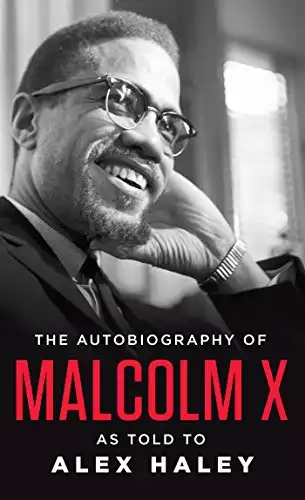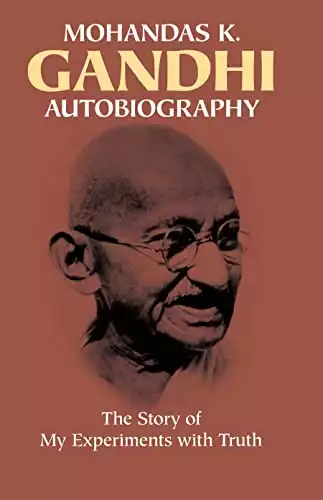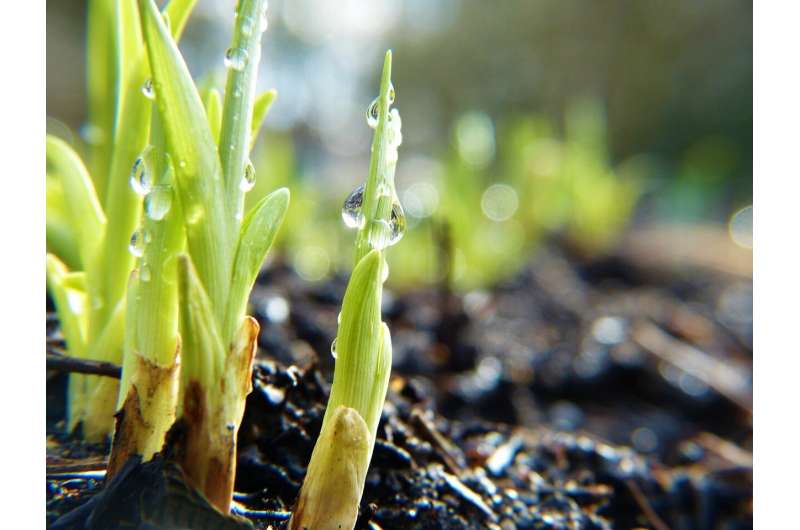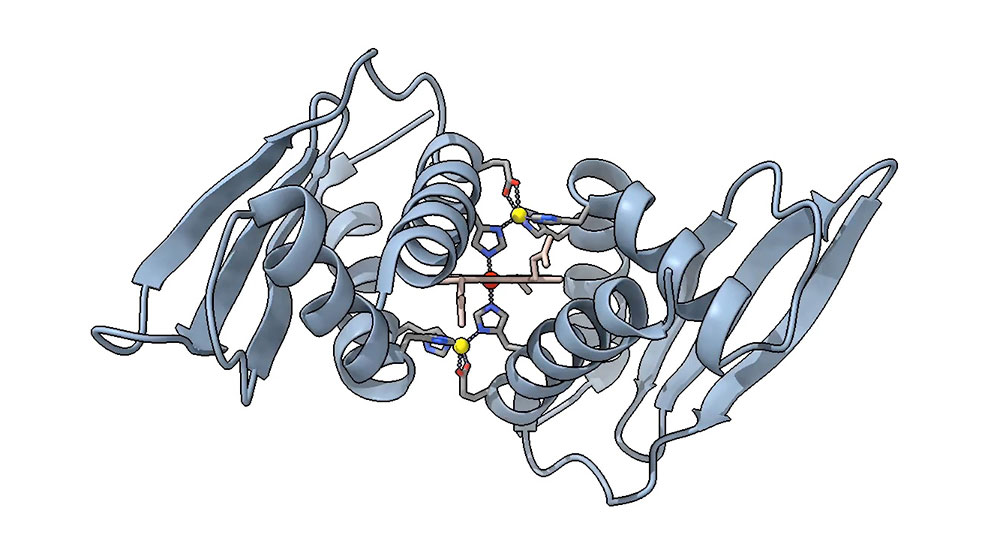Discover Pandipedia
Pandipedia is the world's first encyclopaedia of machine generated content approved by humans. You can contribute by simply searching and clicking/tapping on "Add To Pandipedia" in the answer you like. Learn More
Expand the world's knowledge as you search and help others. Go you!

The first step in yoga is creating a comfortable space to practice. This involves finding a quiet place and laying out a yoga mat. Getting into comfortable, lightweight clothing is also recommended to allow freedom of movement. To start, you might begin with grounding poses like Child’s Pose, where you kneel and lower your torso between your legs, reaching your arms forward to promote relaxation and focus on your breath[4].
Additionally, understanding that yoga is about presence and self-acceptance is crucial. It's important to approach your practice with patience and without the expectation of perfection, as yoga is for everyone, regardless of flexibility[2][4].
Let's look at alternatives:
- Modify the query.
- Start a new thread.
- Remove sources (if manually added).
- Request a manual search from our human research team.

Long Walk to Freedom
The autobiography of Nelson Mandela recounts his journey from childhood through his fight against apartheid to his presidency, offering powerful insights into resilience and forgiveness[1][8].
I Know Why the Caged Bird Sings
Maya Angelou's first autobiography details her struggles with racism and trauma, but also highlights her strength and the power of literature, making it a profound read for motivation[1][3][11].

The Diary of a Young Girl
Anne Frank's poignant diary entries during her time in hiding showcase her hope and courage amidst adversity, serving as a timeless reminder of the human spirit[2][4][10].

Born a Crime
Trevor Noah's memoir expresses his unique experiences growing up in apartheid South Africa, blending humor with serious themes of identity and resilience[3][10].

Man’s Search for Meaning
Viktor Frankl’s narrative from the Holocaust explores how one can find purpose and meaning despite suffering, leaving a lasting impact on readers[4][10].

The Autobiography of Benjamin Franklin
Franklin's reflections on his life, including his pursuit of self-improvement, embody the spirit of perseverance and the American dream[2][8].

The Autobiography of Malcolm X
This powerful account reveals Malcolm X's transformation and insights into race and identity, motivating readers to challenge societal norms[2][11].

The Glass Castle
Jeannette Walls shares her unconventional and often tumultuous childhood, highlighting resilience through adversity[3][4].

The Story of My Life
Helen Keller's autobiography recounts her experiences overcoming disabilities, serving as an uplifting example of determination and triumph[4][8].
A Promised Land
Barack Obama’s memoir details his early political career and experiences in office, sharing lessons on leadership and hope for progress[10][11].
My Life in France
Julia Child offers delightful insights into her passion for cooking and her life in Paris, inspiring readers to pursue their culinary dreams[3][4].
The Year of Magical Thinking
Joan Didion’s memoir explores loss and grief with raw honesty, providing profound reflections on love and memory[2][4].

This Is Going to Hurt
Adam Kay's humorous and harrowing diary accounts of his experiences as an NHS doctor provide insight into the challenges of the medical profession while offering motivation through his tales of resilience[5][11].
The Hiding Place
Corrie ten Boom’s story of hiding Jews during the Holocaust is a powerful testament to faith and courage[6][10].

The Story of My Experiments with Truth
Mahatma Gandhi's autobiography reflects his philosophy of nonviolence and dedication to social justice, motivating readers through his ethical commitment[2][4].
Notes from a Small Island
Bill Bryson's humorous observations about life in Britain motivate readers to appreciate the little things in life while exploring their world[3][11].

Dreams from My Father
Barack Obama's reflective memoir about his identity and journey into politics is filled with lessons on perseverance and hope[2][6].

The Happiest Man on Earth
Eddie Jaku shares his life story as a Holocaust survivor, emphasizing themes of hope and gratitude despite enduring unimaginable hardship[4][11].
Let's look at alternatives:
- Modify the query.
- Start a new thread.
- Remove sources (if manually added).
- Request a manual search from our human research team.
Get more accurate answers with Super Search, upload files, personalised discovery feed, save searches and contribute to the PandiPedia.

The 'ImageNet' challenge has played a pivotal role in advancing deep learning by providing a massive dataset that allowed researchers to train complex models effectively. Initiated by Fei-Fei Li and colleagues, the ImageNet project was aimed at improving data availability for training algorithms, leading to the creation of the ImageNet Large Scale Visual Recognition Challenge (ILSVRC)[3][4]. This dataset, with over 14 million images labeled across thousands of categories, became the key benchmark for assessing image classification algorithms.
The 2012 ILSVRC marked a significant breakthrough when AlexNet, a deep convolutional neural network, achieved unprecedented accuracy, demonstrating that deep learning could outperform traditional methods[1][2]. This success sparked widespread interest in deep learning across various sectors and initiated the AI boom we observe today[3][4].
Let's look at alternatives:
- Modify the query.
- Start a new thread.
- Remove sources (if manually added).
- Request a manual search from our human research team.
Understanding the Role of a Journalist

Journalism plays a crucial role in informing the public about current events, issues, and developments, and the responsibilities of a journalist encompass a wide range of tasks, skills, and ethical considerations. This report synthesizes key aspects of what journalists do, highlighting their core responsibilities, skills, and the ethical standards they uphold.
Core Responsibilities
At the heart of a journalist's work is the gathering, investigating, and reporting of news and information through various media outlets, including newspapers, radio, television, and online platforms. Journalists are tasked with educating the public about events and issues that may affect their lives[3]. This requires not only reporting facts but also contextualizing information so that it is meaningful to the audience[4].
Research and Investigation: Journalists conduct thorough investigations to gather evidence, verify facts, and identify key story elements. Their research involves interviewing a variety of sources, reviewing documents, and staying updated with current events[1][4]. They may also attend events such as press conferences and industry gatherings to gather information directly from subjects or experts[9].
Writing and Reporting: Following their investigation, journalists write articles, reports, and analytical pieces, ensuring their writing is clear, concise, and accurate[10]. They strive to represent multiple perspectives and avoid bias, essential for maintaining credibility and trust with their audience[2].
Interviews: A significant part of a journalist’s role involves conducting interviews, which can be an art form in itself, requiring sensitivity and preparation. Journalists must ask probing questions and practice active listening to elicit valuable insights and quotes from their sources[4][7]. Establishing a rapport and trust with sources is crucial, particularly when dealing with sensitive topics or individuals who may have experienced trauma[5][9].
Utilization of Technology
In today's fast-paced digital landscape, journalists leverage technology and various online resources, including social media, to enhance their reporting. They use digital platforms to gather information more efficiently and to reach wider audiences[7][11]. Crowdsourcing and engaging with the public through social media have become increasingly important in gathering news and audience feedback.
Ethical Standards
Journalists must adhere to strict ethical guidelines to maintain their integrity. This involves respecting the privacy of individuals, obtaining consent for interviews, and accurately reporting information while avoiding conflicts of interest[3][10]. Ethical considerations also include verifying the credibility of sources and ensuring that their reporting is fair and unbiased. They must be vigilant about presenting facts transparently and accurately, which involves acknowledging sources of information to uphold transparency within their work[4][6].
Financial Considerations
Moreover, journalists often have varying earning potentials depending on their area of focus, with those in the finance industry typically earning higher salaries, reflecting the specialized skills they bring to their reporting[6]. This underscores the importance of developing expertise in specific sectors or community issues, enhancing their value within the media landscape.
Evolving Landscape of Journalism
As the media landscape continues to evolve, so too does the role of journalists. They are increasingly expected to adapt to new technologies and changing consumer behaviors in news consumption[11]. This includes utilizing multimedia storytelling techniques and engaging in investigative journalism, requiring in-depth research and a commitment to uncovering hidden truths[7][10].
Furthermore, journalists must familiarize themselves with laws pertaining to journalism such as Freedom of Information (FOI) laws, which can help access necessary public records that inform their stories[7]. The shift towards a more digital-centered approach also emphasizes the need for journalists to build strong networks and maintain relationships with sources to consistently bring credible information to light.
Conclusion
In summary, a journalist's work encompasses a diverse set of responsibilities and skills directed towards the essential goal of informing the public. This involves research and investigation, effective writing, ethical reporting, and the adaptation to new technologies in today's rapidly changing media environment. By adhering to ethical standards and continuously engaging with their communities, journalists play a critical role in fostering informed societies and holding power accountable. As they navigate changes within the industry, their foundational commitment to truth and accuracy remains paramount.
Let's look at alternatives:
- Modify the query.
- Start a new thread.
- Remove sources (if manually added).
- Request a manual search from our human research team.
Let's look at alternatives:
- Modify the query.
- Start a new thread.
- Remove sources (if manually added).
- Request a manual search from our human research team.

Top-P, also known as nucleus sampling, is a configuration setting used in Large Language Models (LLMs) to restrict the predicted next token to come from tokens with the top predicted probabilities[1]. This sampling setting helps to control the randomness and diversity of generated text[1]. Top-P sampling selects the top tokens whose cumulative probability does not exceed a certain value (P)[1]. Values for P range from 0 (greedy decoding) to 1 (all tokens in the LLM’s vocabulary)[1].
The best way to choose between top-K and top-P is to experiment with both methods (or both together) and see which one produces the results you are looking for[1].
Let's look at alternatives:
- Modify the query.
- Start a new thread.
- Remove sources (if manually added).
- Request a manual search from our human research team.
Get more accurate answers with Super Search, upload files, personalised discovery feed, save searches and contribute to the PandiPedia.
Let's look at alternatives:
- Modify the query.
- Start a new thread.
- Remove sources (if manually added).
- Request a manual search from our human research team.

Accent walls are a popular design trend that can dramatically shift the perception of a space, offering color, texture, and personality without overwhelming a room. Here's how to create a stylish DIY accent wall that reflects your taste and enhances your decor.
Understanding Accent Walls
An accent wall is essentially a single wall that acts as a focal point in a room, distinguished by a different color, pattern, or texture compared to the other walls. This technique is particularly effective in spaces that otherwise might feel plain or monotonous. The concept is simple yet powerful, as it allows one to create depth and interest in typically unused spaces, such as behind a bed or a sofa[1][6].
Planning Your Accent Wall
Before you begin, it's crucial to plan your accent wall carefully. Factors such as the room's size, the wall's position, and existing colors should guide your decisions. Visualizing how the selected wall will interact with the rest of the room is key. For instance, you may want to choose a wall that is lacking architectural detail or already features significant items, like large furniture pieces or artwork, to enhance its impact[5][2].
Choosing Colors and Materials
Paint
One of the simplest ways to create an accent wall is through paint. Solid colors can offer a striking visual effect and can easily be changed if you decide to refresh your space in the future. Opt for a bold color that complements the other walls but stands out enough to draw attention[7]. When choosing paint, consider deep shades like navy or hunter green for a moody effect, or light shades for a more airy feel[5][1].
Textured Walls

If you're looking to add depth beyond paint, consider materials that introduce texture. Wood paneling, such as shiplap or board and batten, can bring warmth and character to a room[6][2]. You can create a modern diagonal wood accent wall for a striking statement, or a cozy reclaimed wood wall for a rustic touch[6][1].
Wallpaper and Murals

Wallpaper is making a comeback, and it's an excellent option for creating a unique accent wall. Peel-and-stick wallpaper offers a temporary solution that can be changed easily[5][3]. If you're feeling creative, you could also paint your own mural. This approach allows for personal expression and can transform a child's bedroom or playroom into a vibrant space[7][1].
Techniques and Styles
Geometric Patterns
Creating geometric patterns can elevate your accent wall into a piece of artwork. Using painter's tape, you can design various shapes to paint in different colors. This technique allows for creativity and personalization[7][4].
Stenciling
If you prefer less permanence than wallpaper, stenciling can provide a myriad of patterns that can enhance your accent wall without committing to an entire surface. You can choose intricate designs or simple motifs to achieve your desired look[7][1].
Incorporating Mixed Materials
For a truly unique accent wall, consider mixing materials. Combine wood with fabric panels, or include decorative elements like mirrors or picture frames to create visual interest. This eclectic style can add a dynamic and personalized touch to your space[7][5].
Feature Wall Installation
When installing an accent wall, preparation is key. Ensure that the wall is clean and primed, especially if applying wallpaper or using a textured paint technique. For DIY projects like wood paneling or geometric designs, measure carefully and secure the materials using appropriate tools, such as a brad nailer for wood panels[4][2].
Special Considerations for Each Room
Different rooms can benefit from specific accent wall styles. For instance, using dark, rich colors in dining areas can create warmth and intimacy, while bright, cheerful tones can enhance a kitchen or entryway[5]. Bedrooms might benefit from soothing colors like soft blues or greens, while home offices can incorporate bolder shades or contemporary geometric designs to inspire creativity[1][5].
In bathrooms, accent walls can add a touch of spa-like luxury with textured materials like stone or sleek tiles. This can transform the space into a tranquil retreat, making an accent wall a perfect design choice in smaller, often overlooked areas[6][5].
Final Touches
Once your accent wall is complete, accessorize it thoughtfully. Use decor elements that resonate with the overall theme of the room, such as wall art, mirrors, or decorative shelves. These details can tie the space together and enhance the visual impact of your accent wall[1][3].
Creating a stylish DIY accent wall is an exciting opportunity to personalize your home. Whether through paint, wallpaper, or mixed materials, the right accent wall can bring your space to life in a way that feels uniquely yours. Embrace the possibilities and transform your walls into a canvas of creativity!
Let's look at alternatives:
- Modify the query.
- Start a new thread.
- Remove sources (if manually added).
- Request a manual search from our human research team.
Role of Photosynthesis in Plants
Photosynthesis is a crucial process for plants, enabling them to convert sunlight into usable energy through photosynthetic activity. This process plays a fundamental role in sustaining life on Earth by producing oxygen and glucose, essential for plant survival and food production for other organisms. Photosynthesis specifically involves capturing energy from sunlight to create oxygen and simple sugars, providing fuel for plants to grow and thrive.
Importance of Photosynthesis

The significance of photosynthesis lies in its ability to convert carbon dioxide and water into oxygen and sugars[5], allowing plants to produce the oxygen we breathe and the energy-rich molecules necessary for their growth. This process supports almost every food chain[2], serving as the foundation for life on our planet. Without photosynthesis, life as we know it would not be sustainable, highlighting its critical role in maintaining ecosystems.
Enhancing Photosynthesis for Improved Crop Yields

Scientists and researchers are continually exploring ways to enhance photosynthesis in plants to improve crop yields, resilience to climate change, and overall efficiency. One innovative approach involves gene-editing techniques that boost crop photosynthesis by enhancing gene expression. By increasing the natural ability of plants to utilize sunlight effectively, this method aims to increase global food production[1] and ensure food security amidst environmental challenges.
Mechanisms of Photosynthesis

Within plants, photosynthesis occurs within chloroplasts, where chlorophyll absorbs light energy to convert it into chemical energy. This process involves taking in carbon dioxide and water[5] to create glucose and release oxygen back into the air[3]. Different types of photosynthesis, such as C3 and C4 pathways, have evolved to adapt to varying environmental conditions, demonstrating the adaptability of plants in harnessing sunlight for energy production.
Protein Regulation in Photosynthesis

Proteins play a vital role in regulating photosynthesis reactions and adapting to changing environmental conditions. Proteins like Domain Related to Iron[5] have been identified as key players in fine-tuning energy production in cyanobacteria, aiding in their adaptation to diverse environments. Understanding the intricate mechanisms behind protein regulation in photosynthesis provides insights into how plants adjust to different conditions and optimize their energy production capabilities.
In conclusion, photosynthesis is a fundamental process for plants that enables them to produce oxygen and energy-rich molecules essential for life on Earth. By enhancing photosynthesis through innovative techniques and studying protein regulation, scientists aim to improve crop yields, increase food production, and promote sustainability in agriculture. The role of photosynthesis in plants goes beyond individual growth; it sustains ecosystems, supports biodiversity, and ensures the continuity of life on our planet.
Let's look at alternatives:
- Modify the query.
- Start a new thread.
- Remove sources (if manually added).
- Request a manual search from our human research team.
Let's look at alternatives:
- Modify the query.
- Start a new thread.
- Remove sources (if manually added).
- Request a manual search from our human research team.

























